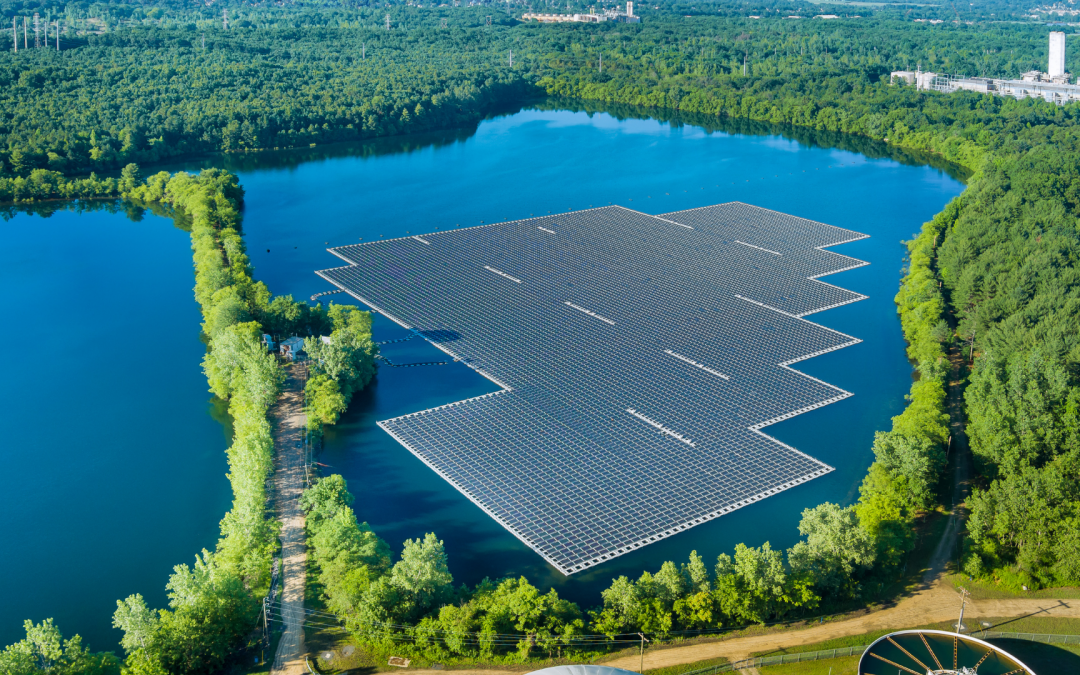As the global demand for renewable energy increases, innovative solutions are emerging to overcome land constraints. One such solution is floating solar farms, which utilize water surfaces to generate electricity. This growing trend is transforming the solar industry, offering numerous benefits in regions where land availability is limited. In this article, we explore the concept, advantages, and future potential of floating solar farms.
1. What Are Floating Solar Farms?
Floating solar farms, also known as floating photovoltaic (FPV) systems, are solar panel installations that rest on bodies of water instead of traditional land-based locations. These systems are typically mounted on floating platforms and are secured using mooring technology to prevent drift. Floating solar installations can be deployed on reservoirs, lakes, ponds, and even coastal areas with calm waters.
2. Why Floating Solar? Addressing Space Constraints
One of the main drivers behind the adoption of floating solar farms is the increasing competition for land resources. In densely populated or agriculturally rich regions, securing large plots of land for solar farms can be challenging. By utilizing underused water surfaces, floating solar offers an efficient way to expand renewable energy capacity without occupying valuable land.
3. Key Benefits of Floating Solar Farms
a. Enhanced Efficiency and Cooling Effect
Water bodies naturally cool the solar panels, reducing overheating and improving their efficiency. Research has shown that floating solar panels can generate more electricity than their land-based counterparts due to this cooling effect.
b. Reduced Land Use Conflict
By deploying solar panels on water, conflicts over land use for agriculture, industry, or housing can be minimized. This approach is particularly beneficial in space-constrained areas where land resources are limited.
c. Conservation of Water Resources
Floating solar panels reduce water evaporation from reservoirs and lakes, making them an effective tool for water conservation. This is particularly advantageous in arid regions where water scarcity is a concern.
d. Environmental Benefits
Floating solar farms can help mitigate algae blooms by reducing sunlight penetration into the water. This can improve water quality and maintain aquatic ecosystems.
e. Potential for Hybrid Energy Systems
Many floating solar projects are integrated with hydropower plants, creating hybrid renewable energy systems. By combining solar and hydroelectric power, these projects offer stable and continuous electricity generation.
4. Challenges and Considerations
Despite their advantages, floating solar farms also present unique challenges:
- Higher Installation Costs: The cost of floating structures, mooring systems, and specialized equipment can be higher than traditional ground-mounted solar farms.
- Maintenance and Durability: Exposure to water and humidity requires robust materials and frequent maintenance to prevent corrosion and biofouling.
- Impact on Aquatic Life: While floating solar can have positive environmental effects, careful site selection is necessary to minimize potential disruptions to aquatic ecosystems and fisheries.
5. Notable Floating Solar Projects Around the World
- Anhui Province, China: Home to one of the world’s largest floating solar farms, China’s Anhui Province has a 150 MW floating solar power plant built on a former coal mine lake.
- Tengeh Reservoir, Singapore: Singapore, a land-scarce nation, has embraced floating solar technology with a large-scale project that helps power water treatment plants.
- Banasura Sagar Reservoir, India: India has been developing multiple floating solar projects to enhance its renewable energy capacity while conserving land for agricultural use.
6. The Future of Floating Solar
As technology advances and costs decline, floating solar farms are expected to play an increasingly significant role in the global renewable energy transition. Governments and private enterprises are investing in research and development to improve efficiency, durability, and scalability.
Additionally, new innovations such as solar islands—autonomous floating solar platforms—could expand the scope of floating solar beyond traditional reservoirs, unlocking opportunities in coastal and offshore areas.
Floating solar farms represent a groundbreaking approach to harnessing renewable energy without competing for land resources. With benefits like improved efficiency, water conservation, and environmental protection, this innovative technology has the potential to revolutionize the solar energy industry. As advancements continue, floating solar is poised to become a vital contributor to the world’s clean energy future.


Recent Comments